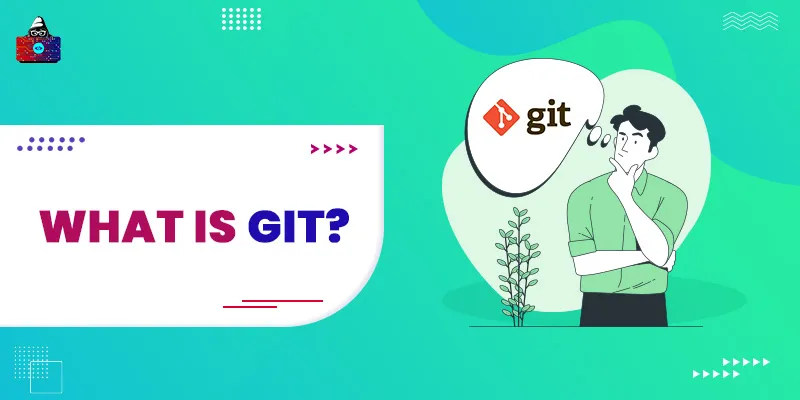The basic explanation of Git says, ‘Git is an open-source Distributed Version Control’. Let us break the words into two Distributed Version Control and Version Control. A Distributed version control means distributing the code stored in the repository to the local as well as the remote server of the user. And the version control keeps track of the changes.
What is Git?
Here in this article, we have provided a simple explanation of what exactly Git is. Before that, let us have a look at what Version control is and what Distributed Version control is.
Version Control System
A control system is used to store content, and in most cases, it stores code. A Version Control System can be considered a tracker assigned to the stored code. So, if the user makes any changes in the code, it could store the snapshot of the previous code and show the update that took place after making changes in the code. In simple words, Version control is a tracker which stores the history of the stored content or code in the control system.
Distributed Version Control
A Distributed Version Control distributes the content or code that has been stored on the server. Here, distributed means it provides a local copy on the user’s desktop. Therefore, even if the server crash and all the content get deleted, the user would have a copy of the code. The distributed Version Control System, like Git, provides a remote repository of the code that has been stored in the central server.
Why do we need Version Control?
In real-world projects, we have a team of developers working on the same projects. It could be possible they would be working isolated, but they need to work parallel. Suppose there is a situation where a Developer makes changes in the project code. So, how are other Developers supposed to grab that change in the program of 1000 lines? Here, version control comes into play.
The version control will take a snapshot of the previous code and compare it with the new changes. So, it would be available for the other developers to see who makes what changes. The Version control has the snapshot of the previous code so the developers can roll back the changes which had been committed.
In big projects, everyone uses Version Controls because it provides more efficiency and brings symphony & visibility to a developer's working style.
What is Git?
Git is an open-source Distributed Version Control System having a larger community than other Version controls. Now, it is used as a standard Version Control System. It promises data assurance for developing high-quality software and hassle-free service. As Git is a Distributed VCS, it can provide the local copy of the content to the user's desktop, which helps the developer to work offline or remotely.
Once the developer has completed his work on the local copy with a few easy Git terminal commands, he can sync his work with the server repository. Furthermore, this version control system has a huge community, making it popular and maintaining its hype amongst new developers and students.
These days, mostly all Integrated Development Environment comes with built-in Git support, which makes it easy for a developer to look over its code using Git Version Control.
Git Features
Open Source
There could be nothing better than free sources, and Git is too free to use Version control. It is under the GPL (General Public Licence). So, everyone can download this version control system for free and use it.
Parallel Development
With Git, all the developers working on the same project can have a project code copy on their own local system so everyone can work simultaneously on the same project and be isolated at the same time.
Branches
Git provides branches such as the master branch, which contains the quality code and features branches yet in the development process.
Built-in Support
Since Git is the most popular version control system, mainly all the IDE (Integrated Development Environments) come with built-in support for Git version control.
Pull Request
Git provides a feature known as a pull request, which help developer to communicate before they push and merge the feature branch (working branch) to the main (master) branch and commit the changes.
Security
This version control system provides complete security with the SHA1 (Secure Hash Function) to the content stored in the repository.
Huge Community
Git has a huge community supporting it, so there is no chance that Git has no future. Every day more and more developers connect with Git and provide it with some new tools.
Conclusion
Git is a popular version control system (VCS) that can handle projects of all sizes with speed and efficiency. It is one of the most promising version control systems that provide data assurance for building high-quality software. Also, it is safe and allows multiple developers to work on a single project simultaneously.
At the end of this article, we hope you have gained better insights into the Git system and its features. In case you have any queries, feel free to share them in the comments section below.
People are also reading:
- Git Commands
- Git Cheat Sheet
- Global vs Local Variables
- Float vs Double
- Git Interview Questions and Answers
- Difference between Stack and Heap
- Top 10 Web Development Frameworks
- Difference between List vs Array
- What is the Internet of Things?


![Top 50 Git Interview Questions and Answers in 2025 [Prepare for Success]](/media/new_post_images/Git-Interview-Questions.webp)

![47 Basic Git Commands with Examples [Updated]](/media/new_post_images/Git-Commands.webp)